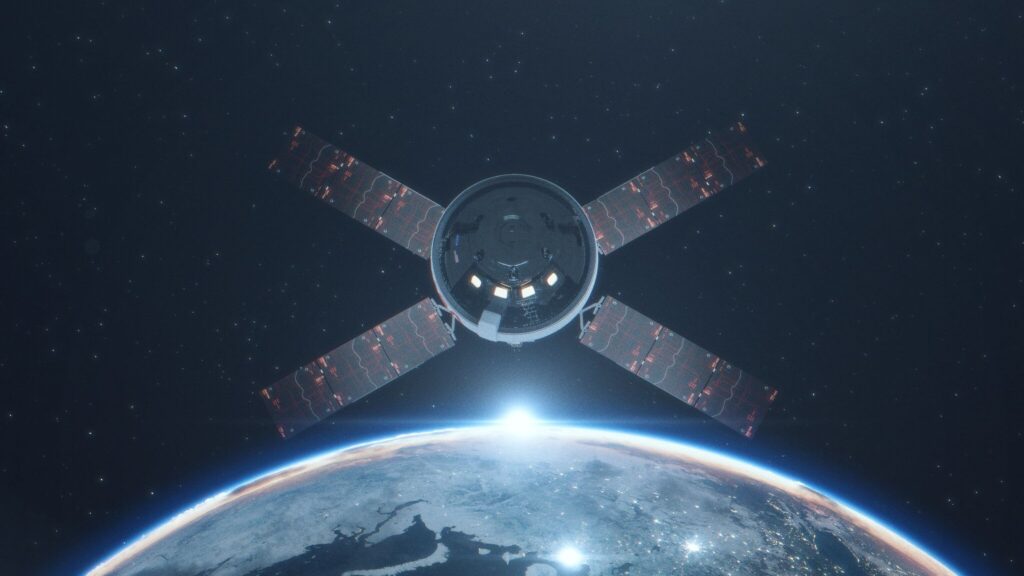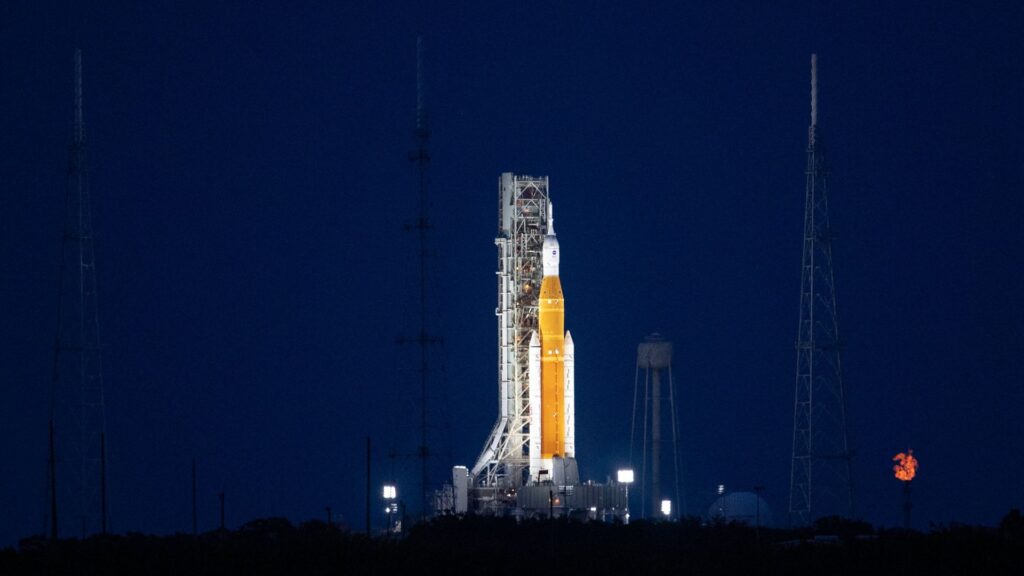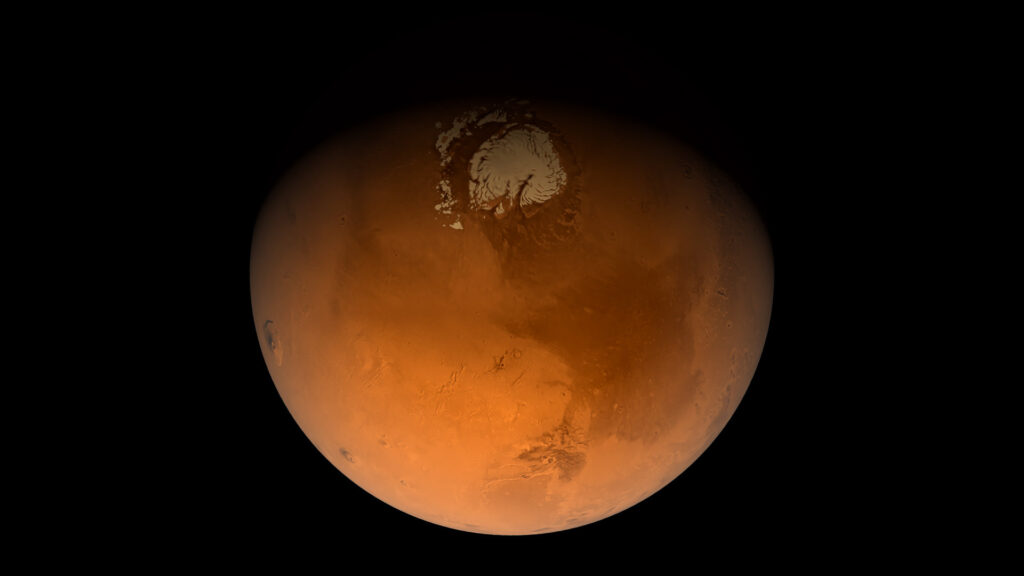Artemis I was a success. Make way for Artemis II in 2024. And then? NASA has a dozen missions in mind.
2022 marked the official launch of the Artemis program, which will return the United States to the Moon. A first mission was successfully carried out last year, with the sending of an unmanned capsule around the satellite – it was Artemis I. It was also the maiden flight of the new rocket of the agency American space: the Space Launch System (SLS), which worked wonderfully.
The rest of the program is set for 2024, with the Artemis II mission. This time, the American space agency (Nasa) intends to put a crew on board, to reproduce the same flight as that conducted in 2022. Four astronauts will be on board – three Americans and a Canadian. The selected crew has not yet been announced. This is to take place at the beginning of April 2023.
Then, we will really get into the “hard”: from Artemis III, the moon landing missions will follow one another, with American crews (places for partner nations — such as Canada, Europe or Japan — are under discussion). Artemis III is expected for 2025, but this mission like the following ones can be rescheduled.
The calendar of the next Artemis missions
2024: Artemis II mission and the manned flyby of the Moon
NASA is sending a crew aboard the SLS for a ten-day trip around the Moon (Artemis I lasted a little longer, with a trajectory stretching over 25 days). Four astronauts will be on board. With this flight, it is a question of continuing and completing the full qualification of the Orion rocket and capsule. The satellite will only be overflown.

Artémis II will also be an opportunity to deploy cubesats through the CubeSat Launch Initiative. At the same time, 2024 is to be the demonstration year for the HLS (Human Landing System). It is the machine designed by SpaceX which must act as a shuttle between the Orion spacecraft and the lunar surface, to ensure arrivals and departures.
2025: Artemis III mission, with a first moon landing
A new crew of four astronauts will leave with the SLS and the Orion capsule, this time with the objective of landing on the Moon. The area of activity has been chosen: the South Pole. At that point, the HLS will have to demonstrate that it is working properly, since it will be essential for “lifting” between the ground and orbit.
At the same time, the year 2025 will mark the start of the international orbital space station around the Moon – it is nicknamed the Lunar Gateway. The first two modules must leave: the PPE module which provides propulsion and energy (Power and Propulsion Element) and the HALO module for the habitat (HALO (Habitation and Logistics Outpost).
2026: deployment of the Lunar Gateway
No Artemis mission in 2026, but the year will be marked by the arrival of the two Lunar Gateway modules. The PPE and HALO structures will be positioned in a special orbit around the Moon. This is a so-called NRHO trajectory for near-rectilinear halo orbit). A nanosatellite, Capstone, was sent in 2022 to test it in real conditions.
2028: Artemis IV mission and new version of the SLS rocket
New manned mission to the Moon, with a new landing. Artémis IV should be an opportunity to put an advanced version of the launcher into action (SLS block 1B). This evolution notably includes an upper exploration stage (Exploration Upper Stage), in order to give NASA an increased capacity to send payloads to the Moon.

In parallel, the Lunar Gateway station will host a new module, I-HAB, for housing and logistics. On Earth, a new version of the Mobile Launch Platform (ML-2) is to debut, replacing ML-1. It is this structure that transports the rocket to its launch pad, once it has been assembled in the hangar.
2029: Artemis V mission and arrival of a land vehicle
The Artemis V mission will have the same profile as Artemis IV. The ESPRIT module (European System Providing Refueling, Infrastructure and Telecommunications) will be sent to the Lunar Gateway station. It will be used for telecommunications and propellant reserves. A terrestrial vehicle (Lunar Terrain Vehicle – LTV) must also be sent to the Moon to explore further.
2030: Artemis VI mission and first brick for the trip to Mars
Artemis VI will look like the other two previous missions. In parallel, the Lunar Gateway station will host yet another module, called Airlock. It will act as an airlock to access the outside of the structure. It will also have a docking port for the Deep Space Transport spacecraft, when it comes to going to Mars.

2031: Artemis VII mission and pressurized rover
The moon landing and crew rotation operations will continue, with the start of operations in the Lunar Gateway station in parallel – it will have received all the initial modules. In parallel, a pressurized vehicle must be sent to the Moon, to be able to travel on the surface without needing to put on the whole suit.
2032?: Artemis VIII mission
The Artemis VIII mission was originally scheduled to take place in 2031, but this slot is taken by Artemis VII. It should probably slip by 2032. The American space agency indicated in October 2022 that it had ordered the production of Orion spacecraft for Artemis VI, VII and VIII. This will be the last Artemis VIII mission with the current SLS engine design.
2033? : Artémis IX mission and new SLS rocket
A new version of the SLS must be operational (SLS block 2), with improved propulsion.
2034 and after: Artemis X, XI and XII missions
In the longer term, the following missions are still relatively hypothetical. Mentions of Artemis X, XI and XII exist in NASA documents, with milestones up to 2035. However, these projects have yet to be approved. The dates mentioned are also subject to caution, given the occasional slippage in the schedule
Subscribe to Numerama on Google News to not miss any news!
